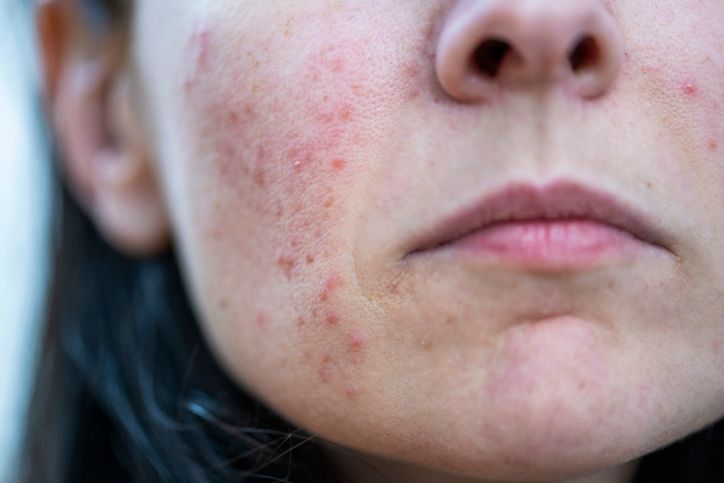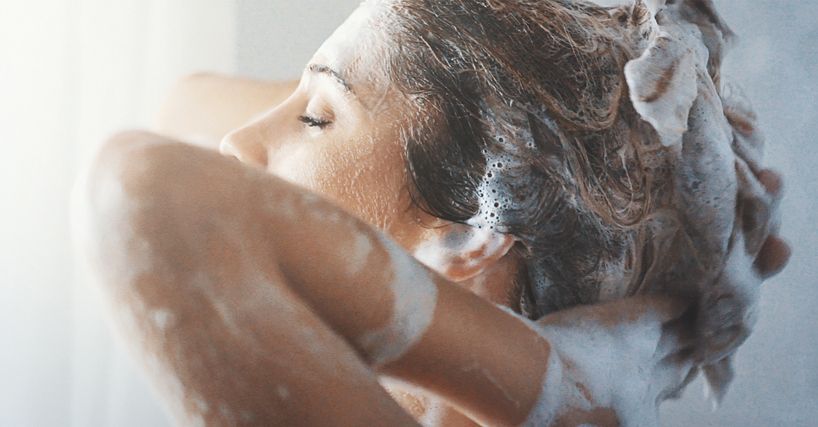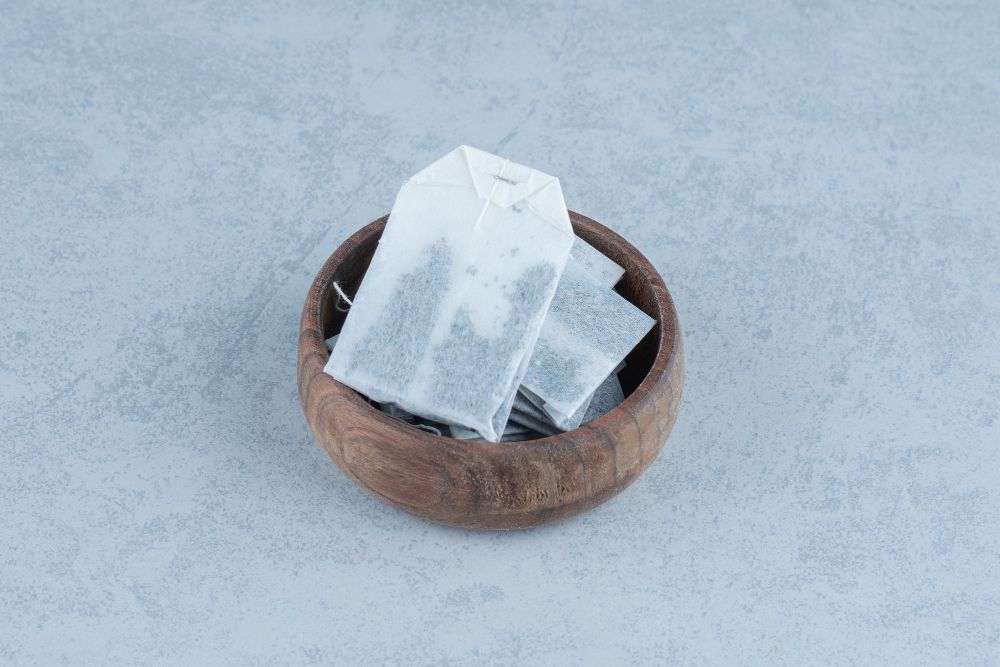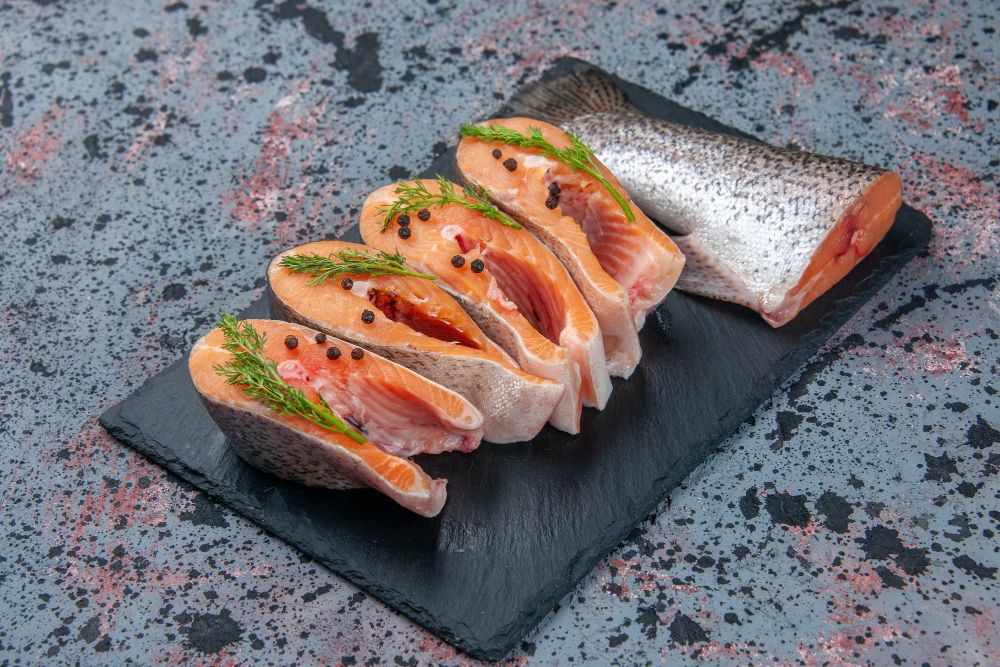
Author: Natalie Ng|Updated: 19 September 2025
Want healthier, stronger hair? The temperature of the water you use makes more of a difference than you might think. Starting with warm water helps open up your hair cuticles and gets blood flowing to your scalp, which preps your hair for shampoo and conditioner. Finishing with a cold rinse helps seal the cuticles, lock in moisture, and leave your strands looking shinier and feeling smoother. It’s not just about whether a hot shower feels good or if cold water wakes you up—each choice you make during your wash can affect everything from scalp health to how your hair grows. The right temperature can help with frizz, moisture loss, and even how your hair products work. If you’re trying to grow your hair, improve shine, or just make your hair easier to manage, pay attention to how you wash. Read on to see how warm and cold water can work together in your routine and why even small changes can make a big difference.

Water Temperature Effects On Hair Health
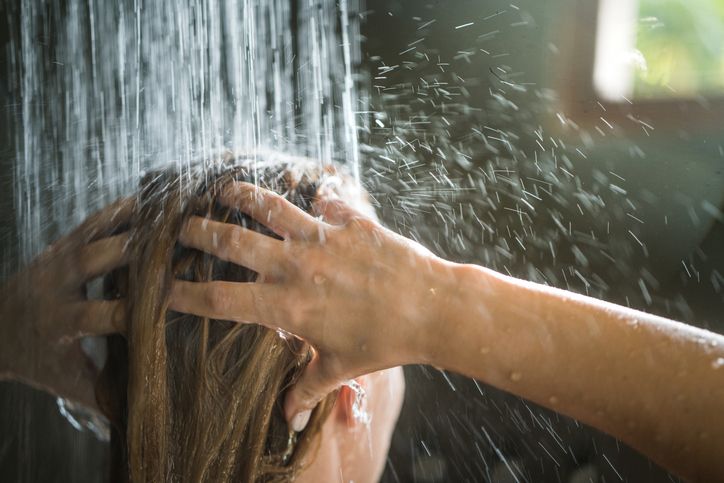
Water temperature doesn’t directly speed up hair growth, but it does affect scalp health and hair condition. Hair grows from follicles beneath the scalp, and while water doesn’t reach that far, it still plays an important role in how your scalp and hair strands respond during your routine. Better scalp care and less damage can support healthier, stronger hair over time.
Warm Water Supports Scalp Health and Cleansing
Using warm water — ideally between 95 and 105°F — helps open your hair cuticles and improve blood circulation to the scalp. This step is useful at the start of washing hair because it:
• Opens the cuticle layer, allowing hair products like shampoo and conditioner to work more effectively
• Helps remove all the dirt, product buildup, and excess oil from the scalp
• Softens the scalp and improves blood flow, which can support hair follicles from the surface
• Prepares the hair shaft to absorb nutrients and treatments more easily
For those with thin hair, oily roots, or an itchy scalp, warm water can improve scalp health and make each wash feel more refreshing and effective.
Cold Water Rinses Help Seal Moisture and Reduce Frizz
After washing, switching to a cold rinse (around 65–75°F) gives your hair a smoother, shinier finish. Cold rinsing refers to the practice of switching to cold water after washing and conditioning, and is known to improve hair texture and shine. Cold water rinses work by:
• Closing the outermost layer of the hair cuticle, which helps seal in moisture and reduce moisture loss
• Protecting the hair shaft by locking in the benefits of conditioner or leave in treatments
• Improving hair shine by smoothing the surface so light reflects more easily
• Reducing frizz and making the hair texture feel softer and more manageable
Adding cold water rinses to your routine helps keep your hair hydrated, especially if you’re dealing with frizzy hair or dry ends. It also supports better hair quality without needing extra product.

Cold Water Benefits for Hair Health
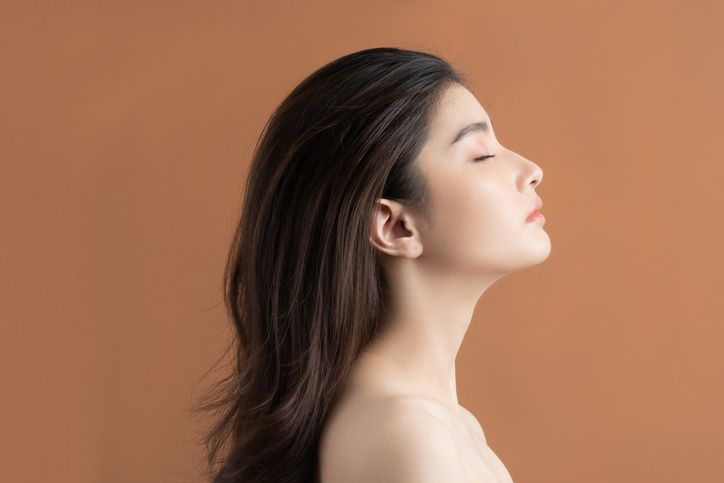
Cold water might not feel great in the moment, but it can support healthier hair and scalp conditions over time. Cold water offers numerous benefits for hair and scalp health.
The key isn’t extreme cold — just cool enough to be refreshing. Rinsing hair with cold water as part of your routine can improve hair quality in small but noticeable ways. Cold water good for hair because it helps seal the hair cuticles, add shine, and reduce frizz, making your hair look healthier overall.
Cold Water Helps Reduce Frizz and Moisture Loss
Rinsing your hair with cold water helps prevent moisture from escaping by smoothing the hair surface. Using hot water can make hair dry by stripping away moisture, while cold water helps retain hydration. While cold water doesn’t permanently seal cuticles, it reduces swelling in the outer layer and helps your hair hold onto hydration longer. This effect leads to fewer flyaways and more manageable hair, especially for those prone to frizz or dry ends.
Cool Rinses Add Shine and Improve Hair Texture
The smoother the hair surface, the more light it reflects — and cold water can help with that. Cold water can help make hair shiny by smoothing the surface and enhancing light reflection. A final cold rinse after conditioning can leave your strands looking shinier and feeling softer. This makes cold water a simple way to improve overall hair texture without extra products.
Scalp Benefits of Cold Water
Cooler temperatures have a temporary tightening effect on blood vessels. This can reduce scalp inflammation and help control excess oil production. If you’re dealing with an itchy scalp, oily roots, or irritation, finishing your wash with cold water may support a healthier scalp environment. Using cold water at the end of your wash can also make your scalp healthier by improving circulation and reducing irritation.
Tips for Using Cold Water in Your Routine
• Use a cold water rinse only as the final rinse — not throughout the entire wash, to help lock in moisture and boost shine
• Drop the temperature gradually so it doesn’t feel like a shock
• Aim for a 20–30 second cold water rinse at the end of your shower
Adding cold water rinses to your hair care routine can support scalp health, reduce moisture loss, and help hair look shinier and smoother — all without needing to change your products.
Read More
Book Now to Experience
F8 Hair Regrowth Treatment
1 Minute Self-Registration
Date should not be before minimal date

Warm Water Advantages in Hair Washing
Warm water is an essential part of a healthy hair care routine. It prepares your scalp and strands for cleansing and helps your hair respond better to the products you use. The right temperature range — usually between 95°F and 100°F — gives you the balance between effective washing and protection.
Warm Water Supports Scalp Cleansing and Detox
Using warm water at the start of your wash helps loosen buildup, making it easier to wash away dirt, excess oil, and leftover hair products. This process clears the way for better scalp health and keeps your hair follicles from getting clogged.
• Removes excess oil without stripping protective sebum
• Helps release dead skin and buildup that could affect scalp balance
• Improves product absorption by prepping the scalp surface
This cleansing step is especially helpful for those using heavy styling products or leave-in treatments.
Warm Water Helps Hair Cuticles Respond to Products
Hair strands respond better to treatments when they’re warmed slightly. Warm water softens the outer layer just enough to help your shampoo and conditioner coat the hair evenly and work more effectively.
• Enhances the performance of cleansing and conditioning products
• Prepares the hair shaft to take in moisture and nutrients
• Prevents uneven product distribution on thicker or textured hair types
You’ll notice improved results from your regular products when warm water is used at the start of your wash.
Improved Blood Circulation From Warm Water
Washing with warm water increases blood flow to your scalp, which supports healthier hair follicles over time. This can help improve how your hair grows and how it feels at the roots.
• Stimulates circulation to deliver nutrients to the follicles
• Helps relax scalp tension, which may affect how your roots behave
• Can support better nutrient flow in your regular hair care routine
Always keep the water comfortably warm, not hot. Water that’s too hot can dry out your scalp and strip natural oils from your hair, leaving it brittle and prone to breakage.

Effects of Water Temperature on Blood Circulation and Scalp Health
The temperature of the water you use during hair washing can directly influence blood circulation in your scalp, which plays a key role in supporting healthy hair growth. While it doesn’t change the speed of growth itself, it impacts the conditions that help your hair thrive.
Warm Water Boosts Blood Flow to Hair Follicles
Warm water encourages blood vessels in the scalp to widen slightly. This temporary dilation improves blood circulation and helps deliver more oxygen and nutrients to the hair follicles.
• Supports the delivery of nutrients that feed the roots
• Promotes a more active scalp environment for stronger strands
• Can help with tension relief, especially during scalp massage
This is especially beneficial during the start of your wash routine. Gently massaging the scalp with warm water for 2–3 minutes can support scalp health and help prepare it for treatments or leave-in products.
Cold Water Temporarily Restricts Blood Flow
Cooler temperatures cause the opposite effect — blood vessels constrict slightly, slowing blood flow. While this isn’t harmful, it’s not the time for scalp stimulation.
• Helps calm inflammation or irritation on sensitive scalps
• Can reduce the appearance of oiliness by calming overactive sebaceous glands
• Offers a refreshing finish that supports a clean, tight-feeling scalp surface
This makes cold water useful at the end of your wash, not the beginning.
Balanced Temperature Use Supports Scalp Function
Using both warm and cold water in one routine—a balanced approach—helps create the right environment for both stimulation and protection.
• Start with warm water to open up blood vessels and loosen buildup
• End with a cool rinse to refresh the scalp and maintain surface balance
• Avoid extremes in temperature to prevent shock or drying effects
Finding the sweet spot in water temperature and routine is key—adjust your approach to suit your specific hair type and needs for optimal results.

Water Temperature Effects on Hair Cuticles
A common myth is that cold water seals the hair cuticle, but in reality, water temperature only has a temporary effect on the outer layer of your hair. Hair cuticles respond to how you wash, but not always in the way most people think. While water temperature can temporarily change how the outer layer of your hair feels and behaves, the actual structure of your hair cuticles is more influenced by product pH and physical care.
Warm Water Helps Products Spread Across the Hair Surface
Warm water softens the outer layer of the hair strand, allowing shampoo and conditioner to spread evenly. This improves how well your products work without permanently changing the cuticle.
• Warms and loosens the outer surface, helping with product distribution
• Reduces resistance when working product into thick or textured hair
• Makes rinsing easier, preventing buildup from staying behind
This step is especially helpful during the cleansing phase, when you want to remove all the dirt, oil, and product from your scalp and strands without causing friction or damage.
Cold Water Smooths the Outer Layer, but Doesn’t Seal It
Cold water is often believed to “seal” the hair cuticle, but studies show it doesn’t lock it shut. Instead, it helps reduce swelling or lifting in the outermost layer, which makes the hair feel smoother.
• Flattens the outer surface for better shine and softness
• Helps reduce friction between hair strands, preventing tangles
• Improves the finish of your wash, especially after conditioning
While cold water doesn’t seal the cuticle completely, it does leave the surface calmer, which can improve hair texture and reduce frizz without needing extra product.
What Actually Affects the Cuticle Structure
The biggest impact on your hair cuticles comes from what you use, not just the temperature of the water.
• pH-balanced hair products (between 4.5–5.5) help maintain the cuticle’s natural shape
• Chemical treatments like color, relaxers, or bleach can break down the cuticle layer
• Physical handling like brushing or heat styling affects how the outer layer behaves
Book Now to Experience
F8 Hair Regrowth Treatment
1 Minute Self-Registration
Date should not be before minimal date

Hair Washing Temperature According To Seasonal Changes
Your hair’s needs don’t stay the same all year. As the weather shifts, so does your scalp’s behavior, moisture levels, and how often you might need to wash. Adjusting the frequency and type of washes according to the season can help maintain hair health. Washing your hair with the right water temperature for each season is important—hot washes can help remove buildup and open cuticles for deep cleaning, while cold washes seal cuticles to lock in moisture and protect hair integrity. Adjusting water temperature by season helps protect your strands from environmental stress — whether it’s summer humidity or winter dryness.
Summer Hair Care: Focus on Freshness and Oil Control
In hotter months, sweat and humidity can make your scalp feel greasy more quickly. You might find yourself washing more often, which means choosing the right water temperature becomes even more important.
Stick with lukewarm water during the main part of your wash — it’s warm enough to remove excess oil but not hot enough to strip your scalp. At the end, a cool rinse helps tighten the cuticle layer, reduce frizz, and add shine.
Tips for summer washing:
• Use cool water as your final rinse to calm frizz and add shine
• Keep washing water lukewarm to avoid overstimulating oil production
• Use a clarifying shampoo once a week to help remove sweat and buildup
• Wash hair in the evening if you’ve been outside most of the day — this removes dirt, oil, and pollutants before bed
Winter Hair Care: Keep Hair Hydrated and Protected
Cold air outside and heating indoors pull moisture from your scalp and strands. Hot water might feel comforting during winter, but it can dry out your hair quickly. You’re better off using lukewarm water to avoid moisture loss while still keeping your routine comfortable.
During winter:
• Wash hair less frequently — 2 to 3 times per week is usually enough
• Stick to lukewarm water during the wash, then finish with a short cool rinse
• Let conditioner sit for a few minutes to help repair dry or brittle ends
• Use a leave-in conditioner right after towel drying to seal in hydration

Best Water Temperatures for Different Hair Types
Your hair type plays a big role in how it responds to water temperature. What works well for fine hair may not suit curly or coarse textures. Adjusting your wash routine based on your hair type can help improve hydration, texture, and shine without overloading your strands with extra product. Finishing your wash with cold water can help make hair stronger by sealing the cuticle and reducing breakage.
Fine Hair: Gentle Temperatures for Stronger Strands
Fine hair is more delicate and can get weighed down easily. It’s also more prone to breakage when exposed to heat or rough handling. Keeping your water temperature mild helps protect its structure.
• Start with warm water (around 95–100°F) to cleanse without stripping natural oils
• Use lukewarm water (85–90°F) when applying conditioner to prevent over-softening
• Finish with a cool rinse (65–75°F) to reduce frizz and add light, natural shine
Avoid hot showers — they can weaken the hair shaft and leave fine strands looking limp or dry.
Curly Hair: Maintain Moisture and Definition
Curly hair tends to be drier and needs extra moisture retention. Water temperature plays a key role in how well curls hold their shape after washing.
• Begin with warm water (around 100°F) to open up the surface and remove buildup
• Use lukewarm water during conditioning to support absorption without disrupting curl pattern
• Rinse with cool water at the end to help keep curls defined and reduce puffiness
Curls are most fragile when wet, so always pat dry gently and avoid rubbing with a towel.
Coarse Hair: Higher Heat for Product Absorption
Coarse hair has a thicker strand structure and often requires more effort to hydrate fully. Warmer water helps soften the outer layer, which makes conditioners and masks work more effectively.
• Start with warm to slightly hotter water (up to 105°F) to open the cuticle surface
• Maintain lukewarm water during washing to avoid over-drying
• Finish with a cool rinse to lock in moisture and help reduce split ends
Since coarse hair can feel dry more often, this routine helps retain hydration while still getting a thorough cleanse.

Creating a Simple and Effective Hair Washing Temperature Routine
A well-balanced hair washing routine doesn’t need to be complicated. Getting your water temperature right at each step can make your products work better, help protect your strands, and leave your hair looking healthier with less effort. Even small adjustments in water temperature can make a big difference in your hair's health and appearance.
Start with Warm Water to Prepare the Hair
Begin your wash with warm water — around 95–100°F — to loosen buildup, open up the hair surface, and increase blood flow to the scalp. This sets the stage for your shampoo and conditioner to perform properly. However, avoid taking a hot shower, as excessively hot water can damage hair by stripping natural oils and weakening the hair structure.
Warm water at this stage helps:
• Remove excess oil and dirt more effectively
• Soften the scalp for easier cleansing
• Allow the hair shaft to take in moisture and nutrients more easily
Use Lukewarm Water While Conditioning
Once shampoo is rinsed out, applying your conditioner with slightly cooler — but still warm — water helps keep the hair hydrated without over-softening the strands. Aim for around 85–90°F.
This middle-ground temperature:
• Keeps cuticles from lifting too much
• Helps conditioner spread evenly across the hair
• Reduces the risk of weakening your strands during detangling
Finish with a Cool Rinse to Refresh and Protect
End your routine with a cool rinse — around 65–75°F — for 20 to 30 seconds. This helps calm the outer layer of your hair, boosts shine, and leaves your scalp feeling refreshed.
Cool water at the end can:
• Help reduce frizz and keep your hair more manageable
• Smooth the surface so light reflects better, creating a shinier look
• Soothe the scalp after exposure to warm water and massaging
Book Now to Experience
F8 Hair Regrowth Treatment
1 Minute Self-Registration
Date should not be before minimal date

Boost the Benefits of Cold Water Rinses With F8 Hair Regrowth Treatment
Cold water rinses help calm the scalp, reduce frizz, and support moisture retention — but if you’re looking to take scalp health and hair growth a step further, pairing your hair care routine with targeted treatments can make a real difference.
F8 Hair Regrowth Treatment is a non-invasive option that supports healthy hair growth by improving scalp condition and stimulating hair follicles using low-energy laser technology and a hair growth serum. It works beneath the surface — where water temperature can’t reach — to enhance blood circulation, clear clogged follicles, and help supply nutrients where they’re most needed.
While cool water rinses help smooth the outermost layer of the hair and reduce surface oil, F8 goes deeper. It targets the root of the issue: weak follicles, poor microcirculation, and imbalanced scalp conditions that can affect long-term hair quality.
How F8 Hair Regrowth Treatment Works
• Laser energy is applied across the scalp to activate dormant follicles and strengthen the surrounding capillaries
• Hair growth serum is absorbed more effectively post-laser, helping to hydrate the scalp, reduce sebum, and support follicle health
• Microcirculation improves, which delivers more nutrients directly to the roots and helps the hair grow stronger from the inside out
Together, this process creates a healthy environment for long-term hair growth, making it an ideal complement to regular cold water scalp rinses. By combining both approaches, you’re giving your scalp the surface care it needs — and the internal support it deserves.
Ready to strengthen your scalp and see real results?
Book your F8 Hair Regrowth Treatment today and take the next step toward healthier, fuller hair.
New Beauty's F8 Hair Regrowth TreatmentBook Now to Experience
F8 Hair Regrowth Treatment
1 Minute Self-Registration
Date should not be before minimal date
FAQ
1. Can cold showers cause hair to fall out?
Cold showers do not directly cause hair loss. In fact, using cold water on your scalp can support a healthier scalp environment by reducing inflammation and calming sebum production. While extreme or prolonged exposure to frigid temperatures might be uncomfortable, rinsing your hair with cool water for short periods can help improve scalp health and reduce dryness, which supports overall hair quality and shine.
2. What is the best water temperature for thin hair?
Thin hair benefits from lukewarm water — around 90–95°F. Water that’s too hot can strip away protective sebum and weaken already delicate hair strands. On the other hand, cold water might not cleanse the scalp as effectively if there’s excess oil buildup. A comfortable temperature that supports both cleansing and moisture retention is ideal for thin, fine hair types.
3. Does cold water help with itchy scalp problems?
Yes, cold water can help soothe an itchy scalp, especially if the itchiness is caused by irritation, dryness, or excess oil. Rinsing with cold water can reduce inflammation and calm the skin’s surface without disrupting the natural oils that protect the scalp. For long-term relief, pair cold water rinses with scalp treatments or hydrating, pH-balanced shampoos.
4. Is it okay to wash your hair with cold water every day?
Washing hair daily with cold water is generally safe, but it depends on your hair type and scalp condition. Cold water helps minimize frizz and moisture loss, but daily washing may still strip natural oils — especially if shampoo is used each time. If you need to refresh your hair daily, consider cold water rinses without shampoo, especially for dry or high-porosity hair.
5. Can changing water temperature improve hair texture?
Yes, adjusting water temperature during your wash routine can influence how your hair feels after drying. Warm water helps clean effectively and prepare the hair for conditioner, while finishing with cold water can smooth the outermost layer of the hair shaft. This helps light reflect off the surface better, creating a smoother texture and adding shine without weighing hair down with products.
Recommended Articles
COPYRIGHT© NEW BEAUTY MANAGEMENT LIMITED 2026. ALL RIGHT RESERVED.

